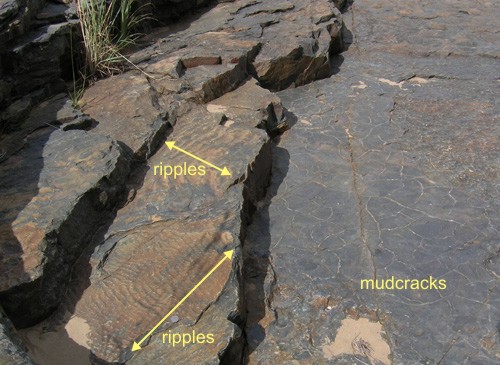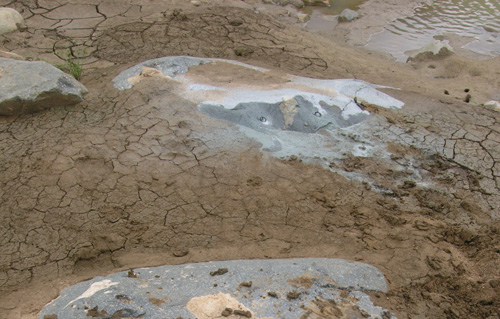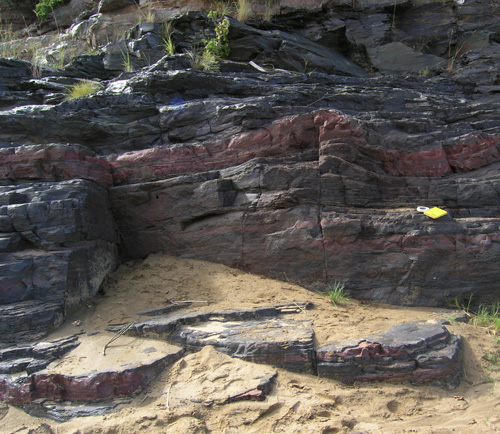Most of you correctly identified the sedimentary structures in Friday’s mystery photo: two sets of ripple marks can be seen on the left, and a lower bed on the right has what look like dessication/mud cracks, formed by the drying and shrinking, and rupturing of wet sediment that is exposed above the water. This suggests some sort of periodically exposed environment with strong and variable currents, making some sort of ancient shoreline affected by tides a likely candidate.

These clastic sediments are somewhere of the order of 2.9 billion years old, and are found in the unit just above the lavas that I was sampling a couple of weeks ago. Not only are the sedimentary structures fabulously preserved, but they are easily interpretable in terms of processes that we can still see operating all around us; for example, here are some mudcracks in the modern river sediments close to one of my sampling sites. It doesn’t seem so fashionable to say so nowadays, but Charles Lyell really was on to something.

Many people weren’t content to leave things at that though, and commented on the fact that the ripple-bearing beds are unusually dark for the sandstones that ripples would suggest they are, and started wondering whether this is due to some unusual geochemistry or mineralogy, possibly as a result of deposition in a time before the atmosphere was oxgenated. To be honest, I’m not sure. The grain size in the rippled beds was quite fine (fine sandstone/siltstone), which might contribute to the darker colour; however, these beds are also found just above a banded iron formation:

There is a thin conglomerate layer between the iron formation and the beds in my original photo, indicating a slight erosional gap – not a surprise given that the iron formation must have been deposited in a deepwater environment. Nonetheless, it’s possible that the colour of the rippled beds might be the result of some (by modern standards) strange iron mineral chemistry. I may go back to this locality at some point, and if I do I’m going to have to investigate this matter further. In the meantime, it seems that this exercise might also highlight the risks of overzealously sticking to uniformitarian principles, as well. Plus, most of my commentators are smarter than I am.



Comments (3)